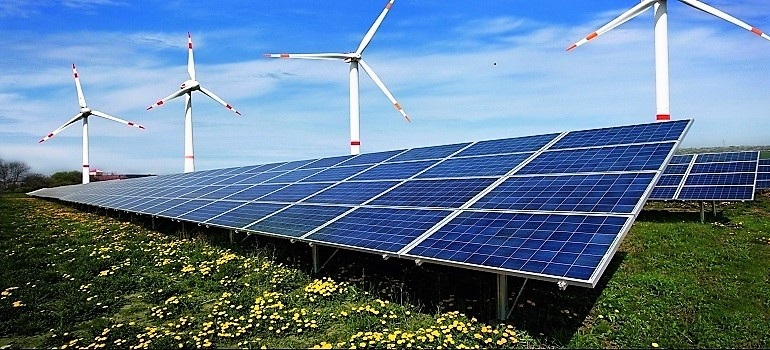 ACCIONA Energia recently received the first ever prototype certificate for a grid-scale energy storage solution by DNV GL. The handover of the certificate took place at the American Wind Energy Association’s 2018 Windpower Conference in Chicago.
ACCIONA Energia recently received the first ever prototype certificate for a grid-scale energy storage solution by DNV GL. The handover of the certificate took place at the American Wind Energy Association’s 2018 Windpower Conference in Chicago.
To explore the possibilities of grid-scale storage, ACCIONA Energia started up a hybrid plant for storing electricity in batteries as part of its grid-connected wind farm at Barasoain in Navarra, northern Spain.
The plant in Barásoain is equipped with a storage system that consists of two batteries located in separate containers: one fast-response battery of 1 MW/0.39 MWh (capable of maintaining 1 MW of power for 20 minutes) and another slower-response battery with greater autonomy (0.7 MW/0.7 MWh, maintaining 0.7 MW for 1 hour). Both have Samsung SDI Li-ion technology connected to a 3-MW AW116/300 wind turbine of ACCIONA Windpower (Nordex Group) technology, from which they capture the energy to be stored.
The wind turbine is one of five that make up the Experimental Wind Farm at Barásoain, operated by the company since 2013. The entire system is managed by control software developed in-house by ACCIONA Energia and is monitored in real time by the company’s Renewable Energies Control Center (CECOER).
The storage plant introduced by ACCIONA has now become the first in the world to undergo system-level certification. The certification process was carried out in line with the GRIDSTOR Recommended Practice, which is based on industry standards and considers safety, performance and reliability for grid-connected energy storage systems.
Energy storage is a key element in the transition to a more sustainable energy mix. It allows renewable sources such as wind and solar power to operate at full capacity during peak generation periods by storing excess energy until it is needed to meet later demand. While many energy storage technologies are well established at smaller scales, their application at grid-scale is still in its early days.
“The market for grid-scale energy storage systems is relatively unexplored, but we see rapid developments. Certifying new systems like ACCIONA’s grid-scale storage plant demonstrates that pioneering projects like this are meeting the required safety, performance and reliability standards and providing the industry with confidence in the quality of emerging new technologies,” said Kim Mørk, Executive Vice President, Renewables Certification at DNV GL.
Mørk added that “as part of our commitment to helping the industry transition to a low-carbon energy mix while maintaining safety and reliability of supply, we focus our efforts to develop industry guidelines on grid-scale energy storage to help designers, manufacturers, investors, insurers and authorities mitigate risks and control costs in energy storage projects.”
For his part, Rafael Esteban, CEO ACCIONA Energy USA Global LLC, said that “our company is at the forefront of the energy transition through our solutions to facilitate the integration of variable-generation renewables into the grid and manage the power produced. Adding the energy storage plant to our Barasoain Experimental Wind Farm will improve the quality of energy sent to the grid, allow us to explore other applications for balancing supply and demand and create a path for commercial storage solutions in our wind power projects.”
“With any emerging technology, technology qualification and certification is essential in understanding and managing risk”, added Esteban.“ In the near future, the bodies involved in the approval and financing of storage systems worldwide will demand these certificates. ACCIONA also wants to be a pioneer in this area. By applying for certification from such a solvent entity as DNV GL, we can guarantee that our plant fulfills all the conditions to operate with full confidence.”


